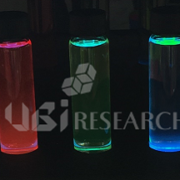Is green emitting material a key material in the high refresh rate trend?

OLED material
Recently released smartphones support a fast refresh rate of 120 Hz. Such a fast refresh rate allows smooth screen transitions and can express dynamic movements, especially in games, but consumes a lot of power.
Major set makers such as Samsung Electronics and Apple started to use OLEDs with LTPO TFTs, which consume relatively low power while realizing a refresh rate of 120 Hz and OLED smartphones to which LTPO TFT is applied are positioned in each set maker’s ultra-premium lineup.
In this high refresh rate trend, the capacitance of the green emitting material is becoming an issue.
If the capacitance of the green emitting material is high, dragging may occur when switching the screen in the high refresh rate mode. Since the human eye responds the most to green, the green appears prominently, which may cause problems in color expression.
For this reason, it is understood that some material makers have recently received requests from set or panel makers to lower the capacitance characteristics of green emitting materials.
Daejeong Yoon, an analyst at UBI Research, said, “The biggest issue for material companies in the past and still is lifetime and efficiency, but recently, even the capacitance of materials has become an issue due to the trend of high refresh rate.” And “Green material with deuterium substitution technology will be applied to some mass production from the second half of this year, and material makers are immediately forced to develop green materials with low capacitance.”
As smartphones supporting a high refresh rate of 120 Hz are expected to become mainstream in the future, the use of green emitting materials with low capacitance is also expected to increase.


 2022 OLED Emitting Material Report Sample Download
2022 OLED Emitting Material Report Sample Download
